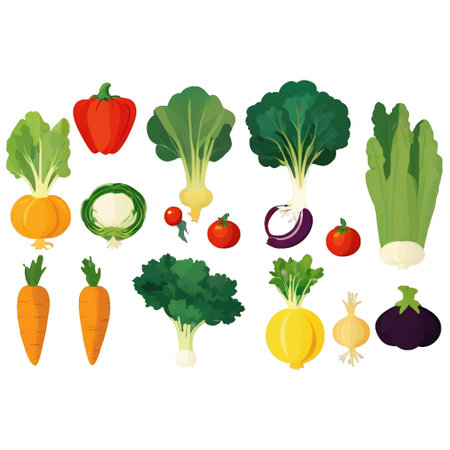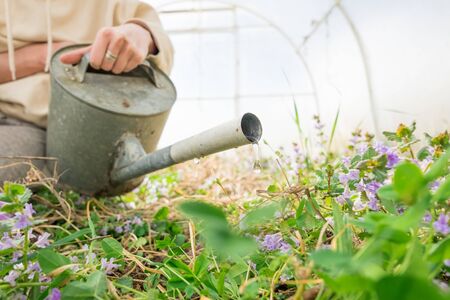Introduction to Companion Planting in the UK
Companion planting is a time-honoured method embraced by British gardeners and allotment holders, rooted in the belief that certain plants can support each other’s growth and resilience when cultivated together. This approach goes beyond mere tradition; it is a practical application of ecological principles, aiming to harness natural relationships between plants to promote healthier crops and deter pests without the reliance on chemical interventions. In the context of British allotments and gardens, where space is often at a premium and biodiversity is highly valued, companion planting offers an effective strategy to manage pest populations sustainably. By carefully pairing vegetables, herbs, and flowers based on their complementary characteristics, growers can encourage beneficial insects, suppress weeds, and reduce the prevalence of common pests such as aphids, carrot root fly, and cabbage white butterflies. The importance of natural pest deterrence in these local settings cannot be overstated—not only does it protect yields and preserve soil health, but it also supports broader environmental stewardship within Britain’s cherished green spaces.
Common Pests in British Gardens
British gardens and allotments are home to a diverse array of plants, but they also provide an inviting environment for several persistent pests. Understanding these common adversaries is the first step toward effective companion planting for pest deterrence. Below is a concise guide to the most prevalent pests found across the UK, as well as an overview of their primary behaviours and risks to crops.
Overview of Major Garden Pests
| Pest | Identification | Affected Crops | Main Issues |
|---|---|---|---|
| Slugs & Snails | Mucous trails, holes in leaves, nocturnal activity | Lettuces, hostas, seedlings | Defoliation and crop loss, particularly on young plants |
| Aphids (Greenfly/Blackfly) | Clusters on stems and undersides of leaves, sticky residue (honeydew) | Beans, roses, brassicas, fruit trees | Sap removal weakens plants, promotes mould growth |
| Carrot Root Fly | Small black flies; larvae burrow into carrot roots causing orange-brown tunnels | Carrots, parsnips, celery | Root damage leads to poor yield and unpalatable crops |
| Cabbage White Butterfly | White butterflies with black spots; caterpillars feed voraciously on leaves | Cabbage, broccoli, kale, other brassicas | Leaf skeletonisation, stunted growth, weakened plants |
Pest Pressure Throughout the Growing Season
Pest populations fluctuate throughout the year in response to weather conditions and plant growth cycles. For instance, slugs thrive during wet springs and autumns when soil moisture is high. Aphids tend to appear in force during warmer months when new growth provides ample feeding opportunities. Carrot root fly is particularly problematic after carrots are thinned or disturbed. Cabbage white butterflies lay eggs from spring through summer, with their caterpillars peaking during late spring and early summer.
The Role of Companion Planting in Pest Management
Each pest listed above has specific vulnerabilities that can be addressed by thoughtful companion planting strategies—an approach that not only deters pests but also supports healthy plant communities within British gardens and allotments.

3. Key Companion Planting Strategies for Pest Control
Effective pest deterrence in British allotments and gardens hinges on thoughtful companion planting, where specific crops and flowers are paired to confuse or repel common pests. This method not only reduces the reliance on chemical interventions but also supports a more resilient garden ecosystem adapted to the UK’s variable weather and local pest species.
Marigolds with Tomatoes
A time-honoured practice among British gardeners is interplanting marigolds (Tagetes) with tomatoes. The pungent aroma of marigolds is well-known to deter whitefly, aphids, and nematodes—persistent threats in greenhouse and outdoor settings alike. Marigolds thrive in the temperate British summer, making them an accessible and effective companion. Simply sow marigold seeds around tomato plants after the last frost for season-long protection.
Chives with Carrots
Another classic pairing is chives with carrots. The strong scent of chives helps mask carrot odours, which can otherwise attract carrot root fly—a notorious pest across the UK. Planting rows of chives or interspersing chive clumps amongst carrots confuses these pests and can lead to healthier, straighter roots. Chives are hardy and perennial, suiting the often unpredictable British climate.
Nasturtiums for Brassicas
Nasturtiums serve as a useful sacrificial crop when grown alongside brassicas such as cabbages and broccoli. Cabbage white butterflies are drawn to nasturtiums, laying their eggs there rather than on your prized vegetables. This ‘trap cropping’ approach is particularly effective in UK gardens during peak butterfly activity from late spring through summer.
Herbs for General Pest Management
Basil, mint, and rosemary are also valuable allies in pest deterrence strategies. Basil planted near tomatoes can help repel thrips and mosquitoes, while mints vigorous scent deters ants and aphids—though it’s wise to contain mint due to its invasive tendencies. Rosemary bushes around garden borders offer some defence against carrot flies and bean beetles, standing up well to typical British rainfall.
Tailoring Strategies to Local Conditions
The success of these pairings depends on local soil quality, microclimates, and pest prevalence. British gardeners benefit from observing their plots throughout the seasons, adjusting companion planting layouts as necessary. Combining these detailed strategies creates a robust natural barrier to pests while supporting pollinators and enhancing overall garden health.
4. Seasonal Considerations for Companion Planting
Understanding Britain’s distinct seasons is essential when planning companion planting strategies for pest deterrence in allotments and gardens. The UK climate, with its mild winters, cool springs, often wet summers, and unpredictable autumns, directly influences both plant growth and pest activity. Aligning planting schedules with these seasonal changes can greatly enhance the effectiveness of companion planting by optimising the presence of beneficial plants at critical times.
Key Seasonal Impacts on Pests and Plants
Pest populations such as aphids, carrot root fly, and cabbage white butterfly fluctuate throughout the year. For example, aphids tend to peak during late spring and early summer, while slugs are particularly active in damp conditions prevalent in autumn and mild winters. Matching your companion plantings to these windows can help disrupt pest lifecycles or repel them before they become problematic.
Practical Timing Tips for Companion Planting
Careful scheduling of sowing, transplanting, and rotation ensures that key pest-deterring companions are present when most needed. The table below summarises practical timings for common British garden pests:
| Pest | Peak Activity | Recommended Companions | Optimal Planting/Rotation Time |
|---|---|---|---|
| Aphids | Late Spring–Early Summer | Marigold, Nasturtium, Chives | Sow companions indoors in early spring; plant out after last frost to coincide with aphid emergence |
| Carrot Root Fly | Spring & Autumn | Onions, Leeks, Rosemary | Alternate rows of carrots and alliums in early spring; repeat sowings for autumn crops |
| Cabbage White Butterfly | Summer (June–August) | Dill, Sage, Mint | Interplant herbs around brassicas in late spring before butterflies lay eggs |
| Slugs & Snails | Mild Wet Periods (Autumn/Spring) | Garlic, Fennel, Calendula | Add deterrent plants to borders at start of rainy season; rotate positions annually to confuse pests |
Rotational Planning for Year-Round Protection
A well-structured crop rotation plan not only maintains soil health but also prevents the build-up of pest populations that target specific plant families. In British gardens, rotating brassicas with legumes or alliums each year reduces cabbage root fly risk while supporting beneficial soil microbes. By mapping out a three- or four-year rotation and integrating suitable companions at each stage, gardeners create a dynamic system that adapts to seasonal shifts and ongoing pest pressures.
5. Success Stories and Challenges from UK Allotment Holders
Across the UK, allotment holders and gardeners have embraced companion planting with varying degrees of success. Their stories provide invaluable insight into what works in British soils and climates—and what pitfalls to avoid.
Case Study: The Classic Carrot-Onion Partnership
Many British gardeners swear by planting carrots alongside onions or leeks. Jane, an allotmenteer from Kent, reports that “the onion scent confuses the carrot root fly, and vice versa.” Her experience mirrors that of several others in her local gardening club, who have seen reduced pest damage without resorting to chemical sprays. However, Jane notes that timing is crucial: “If you sow too late, the pests are already active.”
Success with Marigolds and Tomatoes
In Manchester, Peter shares his success with marigolds (Tagetes) interplanted among his tomatoes. He writes, “The marigolds really seem to keep whitefly numbers down. Plus, they look lovely among the veg.” This approach has gained popularity on many UK plots, as marigolds are hardy and flourish in a range of conditions. Yet, Peter cautions against overcrowding: “Too many marigolds and you’ll shade out your crops. It’s a balancing act.”
The French Bean-Nasturtium Experiment
Sally from Bristol recounts her experiment with nasturtiums sown around her French beans to lure aphids away. “It worked to a point—the aphids did prefer the nasturtiums—but they multiplied so quickly that I had to keep removing infested plants,” she says. This echoes a common challenge: sacrificial plants can become overwhelmed if not regularly managed.
Lessons Learned: Not Every Pairing Succeeds
While many growers highlight positive outcomes, there are tales of disappointment as well. A group of Scottish allotment holders attempted to pair basil with tomatoes outdoors, hoping for mutual benefit. Unfortunately, the cool and wet summers meant basil struggled while offering little pest deterrence. As one gardener notes: “It works in Italy, but not in Glasgow!”
Practical Takeaways
The real-life experiences of UK gardeners reveal that successful companion planting depends on careful observation and adaptation to local conditions. While some combinations deliver impressive results—like onions with carrots or marigolds with tomatoes—others require ongoing maintenance or simply don’t suit the British climate. Sharing these practical stories helps build a collective knowledge base for more resilient and sustainable gardening across the country.
6. Resources and Further Reading for British Gardeners
If you’re keen to expand your knowledge of companion planting and effective pest deterrence in British allotments and gardens, a wealth of region-specific resources is available. Below is a curated list of recommended books, organisations, and websites that offer practical advice, scientific insights, and community support tailored to UK conditions.
Books
- “Companion Planting: The Vegetable Gardener’s Guide” by Chris Smith – A comprehensive introduction with UK-specific examples and seasonal tips.
- “The Royal Horticultural Society Companion to Scented Plants” by Stephen Lacey – Explores the use of aromatic plants in gardens, including their role in deterring pests.
- “RHS Good Plant Guide” by The Royal Horticultural Society – A practical reference for plant selection and pairing in British climates.
Organisations
- The Royal Horticultural Society (RHS) – Offers extensive research-based guidance on companion planting and integrated pest management. Their website features articles, forums, and gardening advice lines specifically for UK gardeners. rhs.org.uk
- The National Allotment Society – Supports plot holders with advice on sustainable practices, including pest control strategies relevant to British allotments. nsalg.org.uk
Websites & Online Communities
- Garden Organic – The UK’s leading organic growing charity provides detailed factsheets on companion planting combinations proven effective against common British pests. gardenorganic.org.uk
- The Allotment & Gardens Forum – A lively online community where growers across the UK share first-hand experiences and troubleshooting tips on companion planting for pest management. allotment-garden.org
- PestWise from RHS – An up-to-date database covering identification and control of garden pests in the UK context, including non-chemical methods and beneficial plant pairings. rhs.org.uk/advice/pests-and-diseases
Further Steps for Enthusiasts
Consider joining local gardening clubs or visiting community allotments to exchange knowledge with fellow gardeners—many groups host workshops or talks specifically addressing regional challenges in pest management through companion planting. For those interested in more formal education, several horticultural colleges across the UK offer short courses on sustainable gardening techniques.
Continual Learning Pays Off
The resources above will support you in making informed choices, experimenting with new plant combinations, and ultimately fostering healthier, more resilient gardens. As with all aspects of gardening, ongoing learning and sharing experiences with others remain key to success in companion planting strategies for British allotments and gardens.


